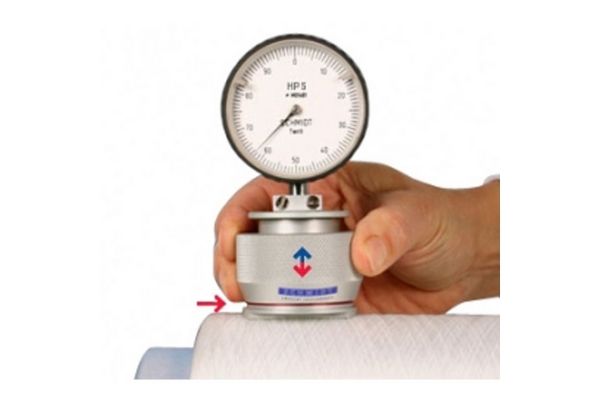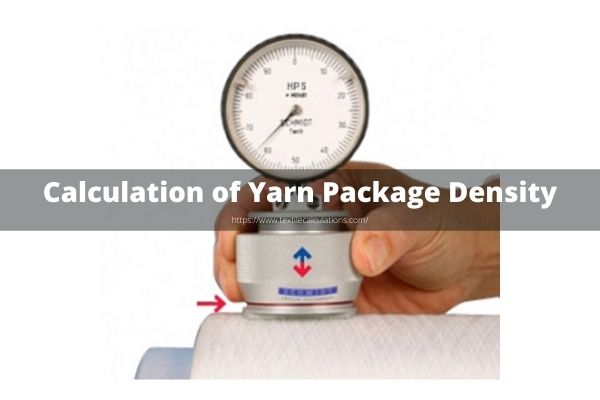Package weight and density:
The packaged weight and density are two important parameters that are to be standardized for uniform and trouble-free dyeing. The packages may be soft or hard these should conform to the standards, when too soft liquor flowing through it will find the course of least resistance and cause channeling, which leaves some parts of the package relatively undyed or lighter. In this article, we will know about the calculation of yarn package density.
If the packages are wound too hard, a point can be reached where the flow of liquor is impeded to such an extent that poor dyeing or none may occur. The packaged weight and dimensions depend upon the type of the machine, its flow rate, automation, type and construction of the yarn to be dyed, dye class to be used and type of package holder to be used. The typical density norms for different types of yarns are between 350-450 gm/ltr.
Calculation of Yarn Package Density

Package Density calculation:
We know,
…………………………………M – m
Package Density = ……………………… gm/cm3 ;
……………………………2π (2R2 – r2)h
Where,
M= Total package wt
m = Bobbin wt; r =Bobbin dia
R= Total package dia ;
h= Bobbin length or height.
If Package wt 1150 gm, bobbin wt 140 gm, package dia 174 mm, bobbin dia 65 mm, height 149 mm, then
………………………………………………..1150-140
Package Density = ……………………………………………………. gm/cm3
…………………………..2 X 3.1416 X {(8.7)2 – (6.5)2 X 14.9
= 0.33 gm/cm3
Production calculation:
……………………………….No. of spindle X M/C speed (m/min)
………………………………….X 60 X 8 X 3 X 1.0939 X efficiency
Production per day = ……………………………………………………….
………………………………………….840 X Count X 2.2046
…….510 X 1000 X 60 X 8 X 3 X 1.0936 X 0.85
= ………………………………………………………………….
…………………..840 X 30 X 2.2046
= 12287.95 kg/day
= 12 tons


mistake in the formula. 2 wouldn't be multiplied with R square.